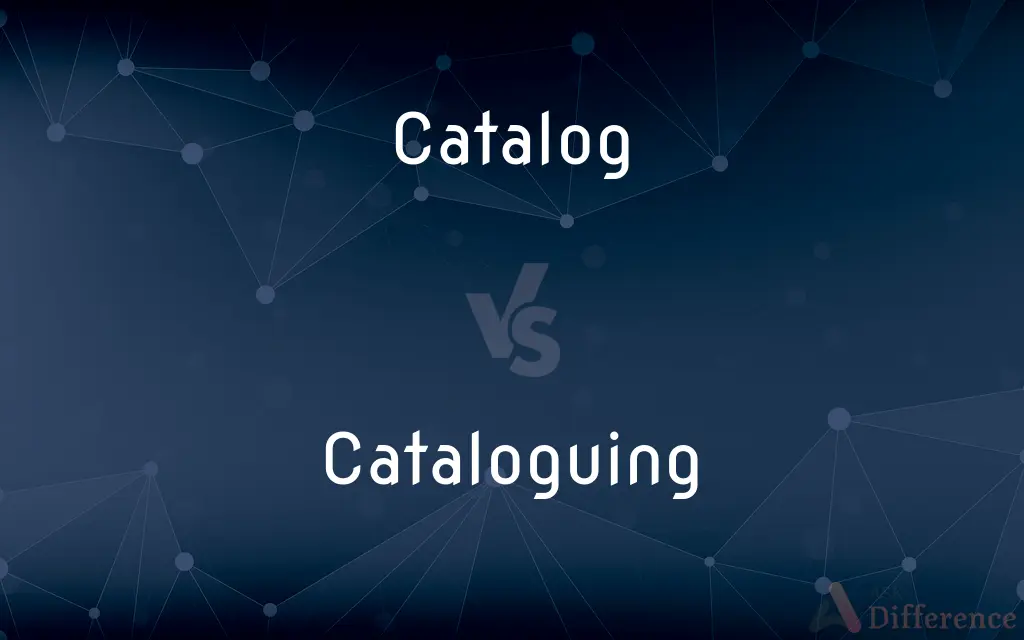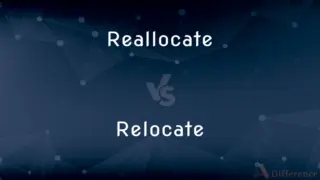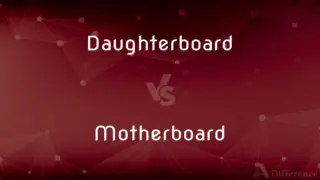Catalog vs. Cataloguing — What's the Difference?
By Tayyaba Rehman & Urooj Arif — Updated on April 4, 2024
Catalog is a list or collection of items, while cataloguing refers to the process of creating such lists or organizing items systematically.

Difference Between Catalog and Cataloguing
Table of Contents
ADVERTISEMENT
Key Differences
A catalog typically refers to a collection or list of items, often systematically organized to provide easy access or reference. These items could be anything from books in a library, products in a store, to entries in a database. On the other hand, cataloguing is the process or action of creating a catalog. This involves selecting, organizing, and describing items in a way that makes them easily searchable and identifiable.
When discussing libraries or collections, a catalog serves as a crucial tool for users to find and access materials. It represents the end product of the cataloguing process, which includes various tasks such as classification, description, and indexing of items. Whereas cataloguing is an ongoing activity that involves constant updates and additions to ensure the catalog remains accurate and comprehensive.
In terms of practical application, a catalog is often the interface that end users interact with, such as a digital database or a printed brochure. Cataloguing, however, is typically carried out by professionals who specialize in information management, employing standardized rules and classification systems to ensure consistency and retrievability across the catalog.
The value of a catalog lies in its ability to organize and present information in a structured manner, making it easier for users to find what they are looking for. Conversely, the skill of cataloguing lies in accurately and effectively organizing information into the catalog, which requires a deep understanding of both the items being cataloged and the needs of the users.
Both catalogs and cataloguing are essential components of information management, but they serve different roles. A catalog is the result of the cataloguing process, a tool for users, while cataloguing is the behind-the-scenes activity that creates and maintains this tool, emphasizing the distinction between the product and the process.
ADVERTISEMENT
Comparison Chart
Definition
A list or collection of items.
The process of creating, organizing, and updating a catalog.
Purpose
To provide easy access or reference to items.
To systematically organize and describe items for a catalog.
Activity
Static, represents a completed list or collection.
Dynamic, involves ongoing tasks of classification and indexing.
Users
End users who search for or reference items.
Professionals who organize and manage the catalog.
Outcome
An organized and accessible collection of items.
A structured system that enables efficient retrieval of items.
Compare with Definitions
Catalog
A systematic list of items, such as books, products, or collection entries.
The library's catalog contains over a million book titles.
Cataloguing
Involves detailed work such as assigning subjects or categories.
She spent the afternoon cataloguing ancient manuscripts.
Catalog
Serves as a reference tool for users.
Refer to our course catalog to choose your classes for next semester.
Cataloguing
Results in a comprehensive and user-friendly catalog.
Thanks to meticulous cataloguing, our archive is well organized.
Catalog
Lists items with details like description, location, or price.
Each entry in the seed catalog includes planting instructions.
Cataloguing
The process of adding items to a catalog, including classification and description.
Cataloguing new acquisitions is a priority for the library staff.
Catalog
Provides a structured way for users to browse or search for items.
Customers can view the entire product range in our online catalog.
Cataloguing
To make items easily searchable and retrievable.
Accurate cataloguing helps students find resources efficiently.
Catalog
A list or itemized display, as of titles, course offerings, or articles for exhibition or sale, usually including descriptive information or illustrations.
Cataloguing
Requires knowledge of classification systems and cataloging rules.
The librarian's cataloguing skills ensure that books are easy to locate.
Catalog
A publication, such as a book or pamphlet, containing such a list or display
A catalog of fall fashions.
A seed catalog.
Cataloguing
A list or itemized display, as of titles, course offerings, or articles for exhibition or sale, usually including descriptive information or illustrations.
Catalog
A list or enumeration
A catalog of complaints.
Cataloguing
A publication, such as a book or pamphlet, containing such a list or display
A catalog of fall fashions.
A seed catalog.
Catalog
A card catalog.
Cataloguing
A list or enumeration
A catalog of complaints.
Catalog
To make an itemized list of
Catalog a record collection.
Cataloguing
A card catalog.
Catalog
To list or include in a catalog.
Cataloguing
To make an itemized list of
Catalog a record collection.
Catalog
To classify (a book or publication, for example) according to a categorical system.
Cataloguing
To list or include in a catalog.
Catalog
To make a catalog.
Cataloguing
To classify (a book or publication, for example) according to a categorical system.
Catalog
To be listed in a catalog
An item that catalogs for 200 dollars.
Cataloguing
To make a catalog.
Catalog
(American spelling) catalogue
Cataloguing
To be listed in a catalog
An item that catalogs for 200 dollars.
Catalog
Catalogue.
Cataloguing
Present participle of catalogue
Catalog
A book or pamphlet containing an enumeration of things;
He found it in the Sears catalog
Cataloguing
(British spelling) The act of arranging in, or as if in, a catalogue.
Catalog
A complete list of things; usually arranged systematically;
It does not pretend to be a catalogue of his achievements
Catalog
Make a catalogue, compile a catalogue of something
Catalog
Make a catalog of
Common Curiosities
Can a person catalog their own collection?
Yes, anyone can catalog their collection, but it may require learning some basic cataloguing principles.
Is a digital database considered a catalog?
Yes, a digital database that organizes and provides access to information is a form of catalog.
Why is cataloguing important?
It ensures that items are systematically organized and can be easily found and accessed.
What is a catalog?
A systematic list or collection of items designed to provide easy access or reference.
Can cataloguing help with inventory management?
Yes, cataloguing is essential for effective inventory management in retail and other sectors.
What does cataloguing involve?
It involves organizing, classifying, and describing items to be added to a catalog.
Can a catalog be both online and in print?
Yes, many catalogs are available in both formats to accommodate different user preferences.
How often should a catalog be updated?
It should be updated regularly as new items are added or existing items are modified or removed.
What skills are required for cataloguing?
Attention to detail, organizational skills, and knowledge of cataloguing standards and systems.
What is the difference between a catalog and a bibliography?
A catalog is an organized list of items available in a collection, while a bibliography is a list of sources used or considered in preparing a work.
What are some common cataloguing systems?
The Dewey Decimal System and the Library of Congress Classification are common in libraries.
Is cataloguing only for libraries?
No, cataloguing is used in various fields, including retail, museums, archives, and online platforms.
What role do keywords play in cataloguing?
Keywords are crucial for searchability, helping users find items based on relevant terms.
How does technology impact cataloguing?
Technology facilitates more efficient and accurate cataloguing processes, often through specialized software.
How does cataloguing affect user experience?
Effective cataloguing improves user experience by making it easier to find and access items.
Share Your Discovery

Previous Comparison
Reallocate vs. Relocate
Next Comparison
Daughterboard vs. MotherboardAuthor Spotlight
Written by
Tayyaba RehmanTayyaba Rehman is a distinguished writer, currently serving as a primary contributor to askdifference.com. As a researcher in semantics and etymology, Tayyaba's passion for the complexity of languages and their distinctions has found a perfect home on the platform. Tayyaba delves into the intricacies of language, distinguishing between commonly confused words and phrases, thereby providing clarity for readers worldwide.
Co-written by
Urooj ArifUrooj is a skilled content writer at Ask Difference, known for her exceptional ability to simplify complex topics into engaging and informative content. With a passion for research and a flair for clear, concise writing, she consistently delivers articles that resonate with our diverse audience.














































